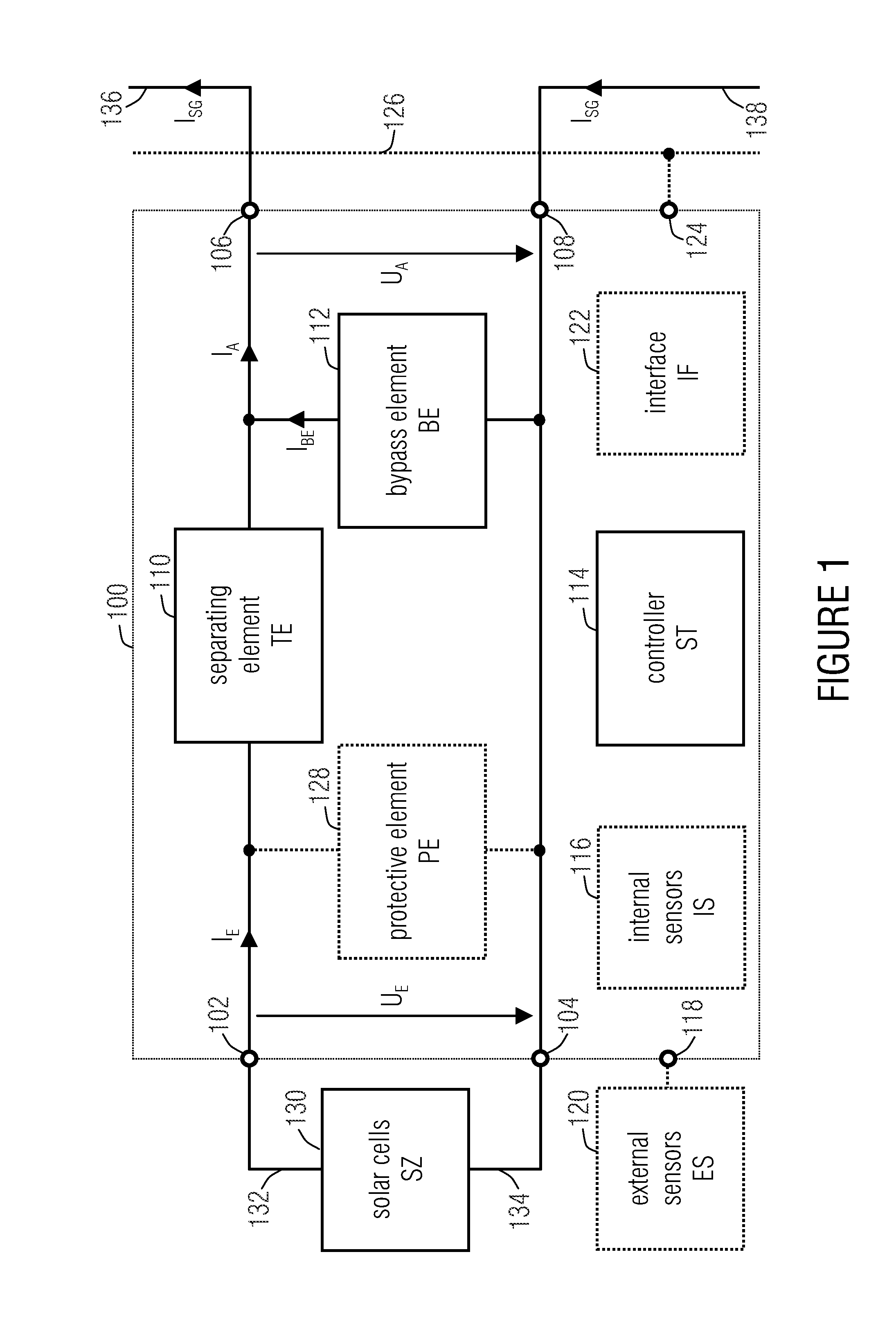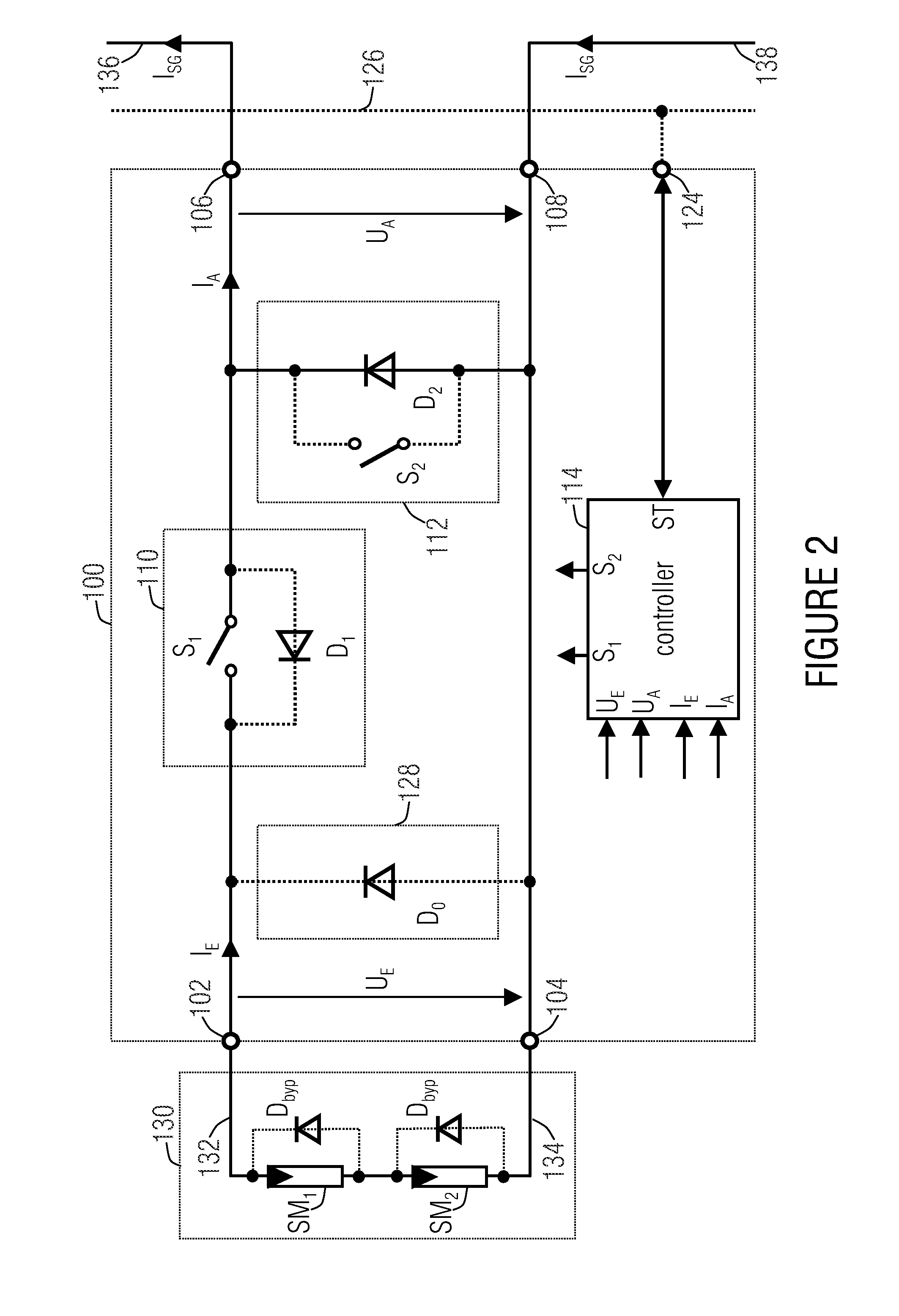Bypass and protection circuit for a solar module and method of controlling a solar module
a protection circuit and solar module technology, applied in the field of solar technology, can solve the problems of solar modules presenting a danger to their environment, solar modules may be damaged, and the voltage present at said cells will revers
- Summary
- Abstract
- Description
- Claims
- Application Information
AI Technical Summary
Benefits of technology
Problems solved by technology
Method used
Image
Examples
Embodiment Construction
[0034]In the following description of the embodiments of the invention, elements which are identical or have identical actions are provided with identical reference numerals.
[0035]Embodiments of the invention provide a bypass and protection circuit which[0036]exploits the advantages of active switching elements for reducing the heat evolution in the event of shading and for optionally switching on solar modules in a targeted manner, but at the same time exhibits a clearly reduced effort involved in providing the control voltage that may be used internally,[0037]operates the shaded solar cells in an open-circuit condition rather than in a short circuit,[0038]is compatible with commercial system components, such as DC-AC inverters, and[0039]may be realized with low-loss and inexpensive structural components having low voltage-sustaining capability.
[0040]FIG. 1 shows a block diagram of a bypass and protection circuit 100 in accordance with an embodiment of the invention. The bypass and...
PUM
 Login to View More
Login to View More Abstract
Description
Claims
Application Information
 Login to View More
Login to View More - R&D
- Intellectual Property
- Life Sciences
- Materials
- Tech Scout
- Unparalleled Data Quality
- Higher Quality Content
- 60% Fewer Hallucinations
Browse by: Latest US Patents, China's latest patents, Technical Efficacy Thesaurus, Application Domain, Technology Topic, Popular Technical Reports.
© 2025 PatSnap. All rights reserved.Legal|Privacy policy|Modern Slavery Act Transparency Statement|Sitemap|About US| Contact US: help@patsnap.com



